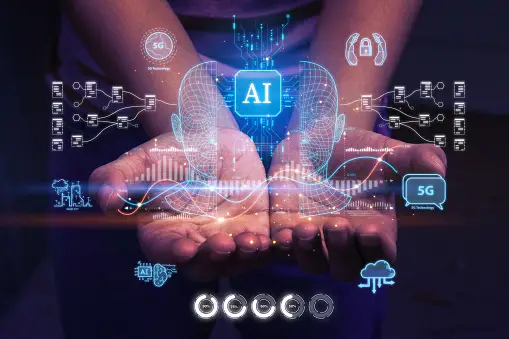By Fleur Sexton
Fleur Sexton, Deputy Lieutenant West Midlands and CEO of dynamic training provider, PET-Xi, with a reputation for success with the hardest to reach,
discusses using AI to support excluded pupils in alternative provision (AP)
Exclusion from school is often life-changing for the majority of vulnerable and disadvantaged young people who enter alternative provision (AP). Many face a bleak future, with just 4% of excluded pupils achieving a pass in English and maths GCSEs, and 50% becoming ‘not in education, employment or training’ (NEET) post-16.
Often labelled ‘the pipeline to prison’, statistics gathered from prison inmates are undeniably convincing: 42% of prisoners were expelled or permanently excluded from school; 59% truanted; 47% of those entering prison have no school qualifications. With a prison service already in crisis, providing children with the ‘right support, right place, right time’, is not just an ethical response, it makes sound financial sense. Let’s invest in education, rather than incarceration.
‘Persistent disruptive behaviour’ – the most commonly cited reason for temporary or permanent exclusion from mainstream education – often results from unmet or undiagnosed special educational needs (SEN) or social, emotional and mental health (SEMH) needs. These pupils find themselves unable to cope in a mainstream environment, which impacts their mental health and personal wellbeing, and their abilities to engage in a positive way with the curriculum and the challenges of school routine. A multitude of factors all adding to their feelings of frustration and failure.
Between 2021/22 and 2022/23, councils across the country recorded a 61% rise in school exclusions, with overall exclusion figures rising by 50% compared to 2018/19. The latest statistics from the Department for Education (DfE), show pupils with autism in England are nearly three times as likely to be suspended than their neurotypical peers. With 82% of young people in state-funded alternative provision (AP) with identified special educational needs (SEN) and social emotional and mental health (SEMH) needs, for many it is their last chance of gaining an education that is every child’s right.
The Department for Education’s (DfE) SEND and AP Improvement Plan (March 2023).reported, ‘82% of children and young people in state-place funded alternative provision have identified special educational needs (SEN) 2, and it (AP) is increasingly being used to supplement local SEND systems…’
Some pupils on waiting lists for AP placements have access to online lessons or tutors, others are simply at home, and not receiving an education. In oversubscribed AP settings, class sizes have had to be increased to accommodate demand, raising the pupil:teacher ratio, and decreasing the levels of support individuals receive. Other unregulated settings provide questionable educational advantage to attendees.
AI can help redress the balance and help provide effective AP. The first challenge for teachers in AP is to engage these young people back into learning. If the content of the curriculum used holds no relevance for a child already struggling to learn, the task becomes even more difficult. As adults we rarely engage with subjects that do not hold our interest – but often expect children to do so.
Using context that pupils recognise and relate to – making learning integral to the real world and more specifically, to their reality, provides a way in. A persuasive essay about school uniforms, may fire the debate for a successful learner, but it is probably not going to be a hot topic for a child struggling with a chaotic or dysfunctional home life. If that child is dealing with high levels of adversity – being a carer for a relative, keeping the household going, dealing with pressure to join local gangs, being coerced into couriering drugs and weapons around the neighbourhood – school uniform does not hold sway. It has little connection to their life.
Asking the group about the subjects they feel strongly about, or responding to local news stories from their neighbourhoods, and using these to create tasks, will provide a more enticing hook to pique their interest. After all, in many situations, the subject of a task is just the ‘hanger’ for the skills they need to learn – in this case, the elements of creating a persuasive piece, communicating perspectives and points of view.
Using AI, teachers have the capacity to provide this individualised content and personalised instruction and feedback, supporting learners by addressing their needs and ‘scaffolding’ their learning through adaptive teaching.
If the learner is having difficulty grasping a concept – especially an abstract one – AI can quickly produce several relevant analogies to help illustrate and explain. It can also be used to develop interactive learning modules, so the learner has more control and ownership over their learning. When engaged with their learning, pupils begin to build skills, increasing their confidence and commitment.
Identifying and discussing these skills and attitudes towards learning, with the pupil reflecting on how they learn and the ways they learn best, also gives them more agency and autonomy, thinking metacognitively.
Gaps in learning are often the cause of confusion, misunderstandings and misconceptions. If a child has been absent from school they may miss crucial concepts that form the building blocks to more complex ideas later in their school career. Without providing the foundations by filling in these gaps and unravelling the misconceptions, new learning may literally be impossible for them to understand, increasing frustration and feelings of failure. AI can help identify those gaps, scaffold learning and build understanding.
AI is by no means a replacement for teachers or teaching assistants, it is purely additional support. Coupled with approaches that promote engagement with learning, AI can enable these disadvantaged young people to access an education previously denied them.
According to the DfE, ‘All children are entitled to receive a world-class education that allows them to reach their potential and live a fulfilled life, regardless of their background.’ AI can help support the most disadvantaged young people towards gaining the education they deserve, and creating a pathway towards educational and social equity.

